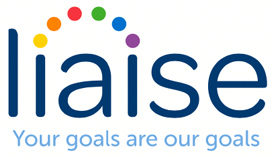Two-way communication with an adult with a learning disability can be complex, but it’s certainly rewarding. When you have a learning disability it can be extremely difficult to get your message across. When people don’t understand what you’re trying to communicate, it’s incredibly frustrating. This is an emotion that often finds an outlet in challenging behaviour, so it’s essential to establish clear communication pathways.
We’ve put together a reference guide to guide you through the communication maze, offering helpful pointers that aid the communication process. Remember, it’s your role to help the person find a way to successfully get their message across to you.
Find a quiet place
Communicating when you have a learning disability is difficult enough, so make sure you’re in a quiet place away from noise and distractions. That way you can both concentrate on the conversation without any interruptions.
Take it slowly
The person you’re communicating with may need to take plenty of time to formulate their thoughts and convey them in words. Don’t rush them, or try to finish sentences for them. Give them the space and time to communicate what they want to say in their own words.
Use facial expressions and gestures
Communication isn’t all about words. Hand and arm gestures and facial expressions can help to convey a wealth of meaning. You can also read the expressions and gestures of the person you’re communicating with to add extra layers to their message.
Repeat back what’s been said
You need to confirm that you’ve understood what’s been said – this reassures the listener that you’ve been paying attention and that their message has been heard. So repeat the message back to them “You’d like to go out into the garden, is that right?”
Consider using other types of media
Not everyone is competent with using words, and in the case of an adult with a learning disability, this may actually be the hardest way of communicating. So don’t ignore the ability of pictures, photographs and drawings to help to get a message across.
Technology is your friend
There are a host of helpful tech platforms to aid communication with adults with learning disabilities. Not every solution is appropriate for everyone, so explore a few options, including an innovative communication tool and a variety of apps and programs designed specifically for this purpose.
Learn Makaton
Sign language isn’t just for the hard of hearing. Makaton is a sign-based language that’s been designed to facilitate communications with adults with learning disabilities. It’s fairly simple to learn and works alongside the spoken word to aid and enhance communication.
Opportunities for care home jobs for learning disabilities in Basingstoke
There’s no long commute involved in care home jobs for learning disabilities in Basingstoke. Opportunities in and around the town make it easy for anyone interested in social care to find their new role in life.
There are care home jobs for learning disabilities in Basingstoke waiting to be filled right now. The only things you need are patience and empathy – everything else can be picked up along the way. So start making a difference today and discover what job satisfaction really means.





